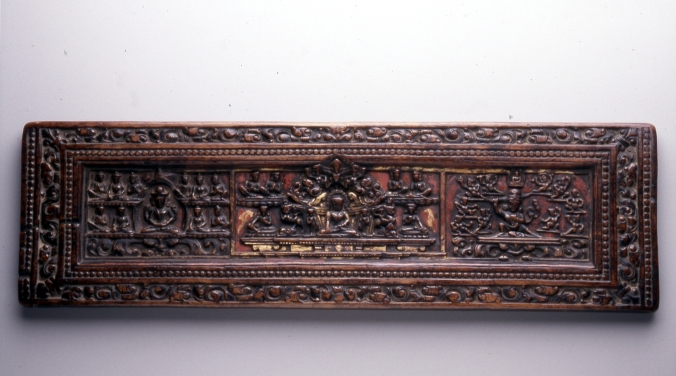Charlotte Connelly was one of the curators of the new Information Age gallery at the Science Museum in London and has since begun a collaborative doctoral research project on early 19th-century electricity, jointly supervised by the museum and the University of Cambridge. She assisted with the conference Objects in Motion: Material Culture in Transition including by chairing a session on the visual arts in transition.
We often imagine that museum objects end their lives when they enter a collection. At the Objects in Motion conference, there was much discussion over whether museum collections are alive, dead, or just resting. Often museum objects have been through a long journey – from their native setting or perhaps another kind of a life to being stripped of their context, given a label and an identification number and placed reverently in a cool dark store to await an audience. An audience of researchers perhaps, arriving one at a time to eagerly inspect a particular quality of that object, or maybe an audience of millions when the object finds itself on display in a large national museum. Whichever of those is true, the question remains: are those objects alive?
Perhaps the perceived dead-ness of museum objects comes down to the act of conservation. At the point of entering the museum, objects are preserved. They are frozen in time, and conservators work to keep the object as a stable representation of the moment it entered the museum collection. However, throughout the Objects in Motion conference we heard challenges to that reading of museum objects.

13th-century wooden Tibetan book cover depicting the Buddha Shakyamuni on the night of his enlightenment. Credit: Wikimedia / Walters Art Museum.
Emma Martin‘s tale of Tibetan book covers showed objects that had been deconstructed, on display as reconstructed artefacts. Wooden book covers had been removed from their books and used as a domestic display before entering the collections of National Museums Liverpool. It was only when they were displayed in an exhibition as the covers to manuscripts, housed within library pigeonholes, that the reason they were produced becomes clear. In one reading, the deconstructed book covers were deadened while they served as adornments for a fireplace in a colonial house, only to be reincarnated on display in a showcase.
In another paper, the challenges of pinning down the precise qualities of digital objects was discussed. Paul Gooding and Stephen Bennett considered video games as continually changing objects. Modern video games are often remastered versions of older games, and even original games are subject to frequent patches and updates thanks to the web. Meanwhile different games platforms have subtle differences. Where is the original ‘living’ game in this picture? What can a museum or archive freeze in time in order to deaden and preserve digital objects that are fluid and changeable?
The closing discussion of the conference saw plenty of debate about the risks and rewards of allowing communities to interact with ethnographic collections. This is a direct challenge to the idea that the objects are dead and frozen. Whether it’s a mask being worn for a dance or a musical instrument being played, there is life yet in a museum object. An alternative example might be the running of industrial collections. A 1950s computer, Pegasus, was until recently operated in London’s Science Museum. Every time it was run there was the risk that thermionic valves would blow and need to be replaced. This occurred regularly, and yet the object – its inventory number, description, and outward identity – remain. To the museum, the object is the same one that entered the museum many years ago.
So, are museum objects truly frozen in time? There is no single good answer to this question. However, it is clear that very few objects sit on a shelf remaining inanimate once acquired. Even if they undergo little physical change, their audiences alter their meanings. Perhaps a better question is: are our attitudes to this object frozen in time? To keep objects alive we must facilitate more people interacting – physically or intellectually – with them, in order to keep our perceptions of the objects vital.


Pingback: Charlotte Connelly